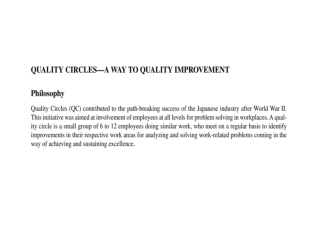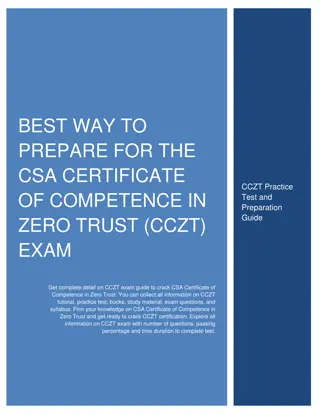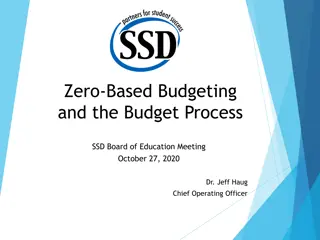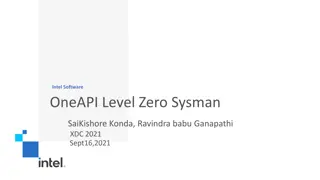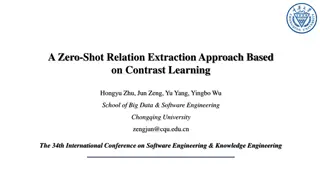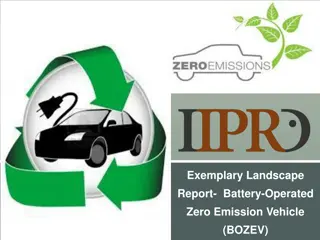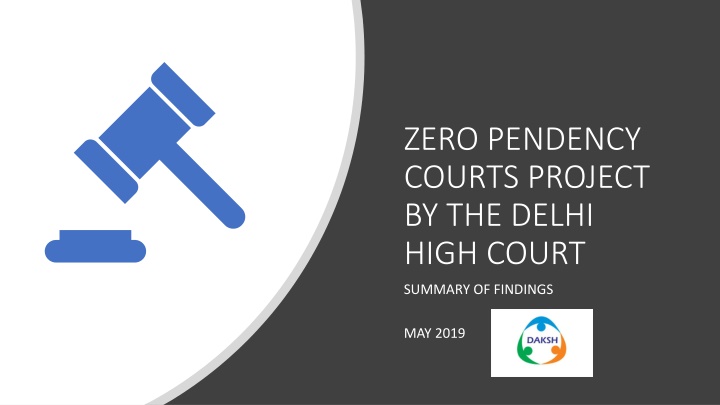
Insights from Zero Pendency Courts Project by Delhi High Court
Gain valuable insights from the Zero Pendency Courts Project conducted by the Delhi High Court in May 2019. The project aimed to study case flow, identify delays, set realistic timelines, and assess variables affecting case disposal. Findings highlight patterns in civil and criminal cases, time spent per hearing, and key recommendations for improving court efficiency.
Download Presentation

Please find below an Image/Link to download the presentation.
The content on the website is provided AS IS for your information and personal use only. It may not be sold, licensed, or shared on other websites without obtaining consent from the author. If you encounter any issues during the download, it is possible that the publisher has removed the file from their server.
You are allowed to download the files provided on this website for personal or commercial use, subject to the condition that they are used lawfully. All files are the property of their respective owners.
The content on the website is provided AS IS for your information and personal use only. It may not be sold, licensed, or shared on other websites without obtaining consent from the author.
E N D
Presentation Transcript
ZERO PENDENCY COURTS PROJECT BY THE DELHI HIGH COURT SUMMARY OF FINDINGS MAY 2019
To study the actual, real-time Flow of Cases from the date of institution till final disposal. To identify the variables responsible for delays in disposal of cases. OBJECTIVES OF THE PROJECT To assess realistic time lines needed for the final disposal of newly instituted cases relating to different jurisdictions. To stipulate norms designating the acceptable or tolerable time schedules for disposal of different types of cases. To assess the realistic time lines required for various stages of the flow of cases in different jurisdictions. To appreciate the variables involved in filing and institution patterns and mapping the nature of litigation in different jurisdictions in different District Courts.
The project started in January 2017 in subordinate courts in Delhi. 11 pilot courts with no backlog or arrears were chosen Each of the 11 pilot courts were compared with a reference court handling similar types of cases and within the same jurisdiction. Pilot courts were closely monitored by the High Court Courts were expected to record the number of minutes spent per hearing and the reasons for adjournments BRIEF BACKGROUND
DAKSHs ROLE DAKSH HAS BEEN ASSOCIATED WITH THE PROJECT SINCE APRIL 2017 TO EASE THE DATA COLLECTION PROCESS, DAKSH DEVELOPED AN ONLINE TOOL, COURT LOG THE APP HELPED IN RECORDING TIME SPENT PER HEARING, REASONS FOR ADJOURNMENTS AND VARIOUS OUTCOMES OF A HEARING THROUGH A DROP DOWN LIST. DASHBOARDS WERE SET UP FOR EACH OF THE COURTS FOR QUICK ANALYSIS AND CONTAINED A SUMMARY OF THE WORK DONE BY THE JUDGES ON THE PREVIOUS DAY. DATA WAS ENTERED BY THE COURT STAFF ON A DAILY BASIS. COURT STAFF WERE TRAINED BY THE DAKSH REPRESENTATIVES. DAKSH ASSISTED THE DELHI HIGH COURT DRAFT THE FINAL REPORT WHICH WAS RELEASED ON 3 MAY 2019.
Amongst civil cases, Misc. Cases/Purpose stage occupied the highest percentage of hearings in both the pilot and the reference courts. This stage is an omnibus classification that include written statements, issuing of notice/summons, filing of replication etc. Since pilot courts had a fewer number of cases on their docket they could spend more time per hearing when compared to the reference courts. Amongst criminal cases Prosecution Evidence stage occupied the highest percentage of hearings in the pilot and the reference courts indicating that Prosecution Evidence stage forms the crux of criminal proceedings. Analysing flow of cases in courts In terms of minutes, the trend was similar as pilot courts handling civil cases spent more amount of time per hearing on the final order/judgments stage. In terms of time, most of the pilot courts with criminal cases spent more amount of time per hearing on the final arguments and the final order/judgments stage. Courts need to research on case laws and dictate judgment which takes a considerable amount of time.
Ideal time taken to dispose cases Category for Pilot Courts Case Types Average days taken to dispose Average Minutes taken to dispose Sessions Courts Sessions Cases 147 527 Sessions Courts (Murder Cases) Sessions Cases 197 963 The table indicates the effort required by pilot courts to dispose different types of cases. The data can be used to create ideal time lines for disposal of cases and can form the basis for defining backlogs. Fast Track Court (Rape Cases) Sessions Cases 90 265 District Courts Civil Suits 149 129 Labour Court Labour/Industrial Tribunal Reference Cases 122 141 Motor Accidents Claims Court 50 86 Motor Accidents Claims Cases Rent Controller Court Rent Control Cases 77 123
Average days to complete stages in pilot courts handling criminal cases 160 136 Average days for different criminal stages 140 126 120 100 80 70 60 47 40 31 29 26 24 23 22 21 19 18 16 16 16 20 13 12 0 Framing of Charges Prosecution Evidence Statement of Accused Defence Evidence Final Arguments Final Order/Judgment Fast Track Court (Rape Cases) Sessions Court (Murder Cases) Sessions Court The chart shows the average days taken to complete different stages in pilot courts. Courts tend to take the most amount of days to complete the Prosecution Evidence stage.
0 10 20 30 40 50 60 70 80 90 100 74 29 Misc. cases/purpose 17 54 46 16 Average days for different civil stages Framing of Issues 10 44 35 Misc. Arguments 17 46 21 14 Misc. Order 16 50 89 The chart shows the average days taken to complete different stages in pilot courts. Courts tend to spend the most amount of days on the evidence stages and misc. cases/purpose stage. 27 Plaintiff/Petitioner Evidence 30 57 87 27 Defendant/Respondent Evidence 19 40 32 22 Final Arguments 19 28 20 11 Final Order/Judgment 8 20 District Judges Labour Court Motor Accidents Claims Court Rent Controller
Absence of witnesses was identified as the most common reason for adjournments. As per court log data 8% of hearings in sessions courts and motor accidents claims courts were adjourned due to absence of witnesses. Adjournments sought by counsels/parties at different stages was also a major reason for delay. 13% of hearings in district courts were adjourned due to either the absence of the counsels/parties or extra time sought by them. Causes for Delay Delay in service summons to the parties or witnesses further tend to delay the day to day proceedings of the court. Summoning outstation parties was also identified as a major reason for delay in the pilot courts.
Category Ideal judge strength Number of current Number of to clear all the judges pending cases as Ideal judge strength for Delhi pending cases in of 9 April 2019 one year across Delhi Sessions Courts 82 60 32,378 Fast Track Courts 5 6 1,610 District Courts 62 49 7,1962 Labour Courts 26 11 12,308 Motor Accidents 7 12 13,340 Claims Courts Rent Controller 4 5 5,214 Courts With the help of the Time-Based Weighted Case Load method and the duration of time spent by the pilot judges on different cases, the ideal number of judges required to dispose all the pending cases in Delhi has been calculated.
Way Forward The data can be used to asses the time lines for various stages in a case. Benchmarks can be created for disposing different types of cases. Data can be used to come up with a concrete definition of backlog or delay. The effort taken to dispose a case can be incorporated in the units system which is used to assess the performance of subordinate court judges. An ideal judge strength required can also be calculated.

![Read ebook [PDF] Infiammazione Zero La Promessa Della Dieta Antinfiammatoria](/thumb/9900/read-ebook-pdf-infiammazione-zero-la-promessa-della-dieta-antinfiammatoria.jpg)

